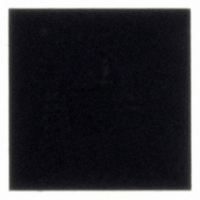ISL6336BIRZ Intersil, ISL6336BIRZ Datasheet - Page 24

ISL6336BIRZ
Manufacturer Part Number
ISL6336BIRZ
Description
IC CTRLR PWM SYNC BUCK 48-QFN
Manufacturer
Intersil
Datasheet
1.ISL6336BCRZ.pdf
(31 pages)
Specifications of ISL6336BIRZ
Applications
Controller, Intel VR11.1
Voltage - Input
3 ~ 12 V
Number Of Outputs
1
Voltage - Output
0.5 ~ 1.6 V
Operating Temperature
-40°C ~ 85°C
Mounting Type
Surface Mount
Package / Case
48-VQFN
Lead Free Status / RoHS Status
Lead free / RoHS Compliant
Based on the V
voltage to a 6-bit digital signal for temperature compensation.
With the non-linear A/D converter of ISL6336B, the TM digital
signal is linearly proportional to the NTC temperature. For
accurate temperature compensation, the ratio of the TM
voltage to the NTC temperature of the practical design should
be similar to that in Figure 15.
Depending on the location of the NTC and the air-flowing,
the NTC may be cooler or hotter than the current sense
component. The TCOMP pin voltage can be utilized to
correct the temperature difference between the NTC and the
current sense component. When a different NTC type or
different voltage divider is used for the TM function, the
TCOMP voltage can also be used to compensate for the
difference between the recommended TM voltage curve in
Figure 16 and that of the actual design. According to the
V
a 4-bit TCOMP digital signal as TCOMP factor N.
TCOMP factor N is an integer between 0 and 15. The
integrated temperature compensation function is disabled for
N = 0. For N = 4, the NTC temperature is equal to the
temperature of the current sense component. For N < 4, the
NTC is hotter than the current sense component. The NTC is
cooler than the current sense component for N > 4. When
N > 4, the larger TCOMP factor N, the larger the difference
between the NTC temperature and the temperature of the
current-sense component.
ISL6336B multiplexes the TCOMP factor N with the TM digital
signal to obtain the adjustment gain to compensate the
temperature impact on the sensed channel current. The
compensated channel current signal is used for droop and
overcurrent protection functions.
Design Procedure
1. Properly choose the voltage divider for TM pin to match
2. Run the actual board under the full load and the desired
3. After the board reaches the thermal steady state, record
4. Use Equation 23 to calculate the resistance of the TM
5. Use Equation 24 to calculate the TCOMP factor N:
6. Choose an integral number close to the above result for
CC
the TM voltage vs temperature curve with the
recommended curve in Figure 15.
cooling condition.
the temperature (T
(e.g., inductor) and the voltage at TM and VCC pins.
NTC, and find out the corresponding NTC temperature
T
the TCOMP factor. If this factor is higher than 15, use
N = 15. If it is less than 1, use N = 1.
R
N
voltage, ISL6336B converts the TCOMP pin voltage to
NTC
NTC T NTC
=
209x T
------------------------------------------------------- -
(
from the NTC datasheet.
3xT
(
CC
NTC
)
CSC
=
voltage, ISL6336B converts the TM pin
V
------------------------------- -
V
+
–
TM
CC
400
T
CSC
NTC
xR
–
V
TM1
) of the current sense component
)
TM
+
24
4
(EQ. 23)
(EQ. 24)
ISL6336B
10. Record the output voltage as V1 immediately after the
11. If the output voltage increases over 2mV as the
A design spreadsheet is available to speed aid calculations.
External Temperature Compensation
By pulling the TCOMP pin to GND, the integrated
temperature compensation function is disabled. In addition,
one external temperature compensation network, shown in
Figure 18, can be used to cancel the temperature impact on
the droop (i.e. load line).
The sensed current will flow out of the FB pin and develop the
droop voltage across the resistor (R
VDIFF pins. If the R
increases, the temperature impact on the droop can be
compensated. An NTC thermistor can be placed close to the
power stage and used to form R
temperature characteristics of the NTC, a resistor network is
needed to make the equivalent resistance between FB and
VDIFF pin reverse proportional to the temperature.
The external temperature compensation network can only
compensate the temperature impact on the droop, while it
has no impact to the sensed current inside ISL6336B.
Therefore this network cannot compensate for the
temperature impact on the overcurrent protection function.
7. Choose the pull-up resistor R
8. If N = 15, do not need the pull-down resistor R
9. Run the actual board under full load again with the proper
FIGURE 18. EXTERNAL TEMPERATURE COMPENSATION
otherwise obtain R
resistors to TCOMP pin.
output voltage is stable with the full load; Record the
output voltage as V2 after the VR reaches the thermal
steady state.
temperature increases, i.e. V2 - V1 >2mV, reduce N and
redesign R
as the temperature increases, i.e. V1 - V2 >2mV,
increase N and redesign R
R
TC2
=
NxR
---------------------- -
15 N
TC2
–
TC1
; if the output voltage decreases over 2mV
o
FB
C
resistance reduces as the temperature
TC2
by Equation 25:
COMP
TC2
VDIFF
FB
FB
TC1
. Due to the non-linear
.
FB
) between FB and
(typical 10kΩ);
INTERNAL
ISL6336B
CIRCUIT
August 31, 2010
TC2
(EQ. 25)
FN6696.2
,











